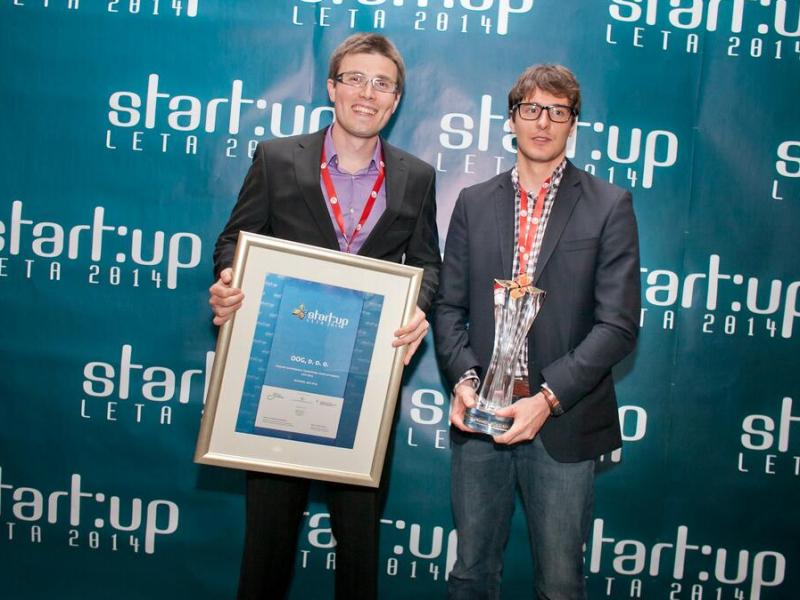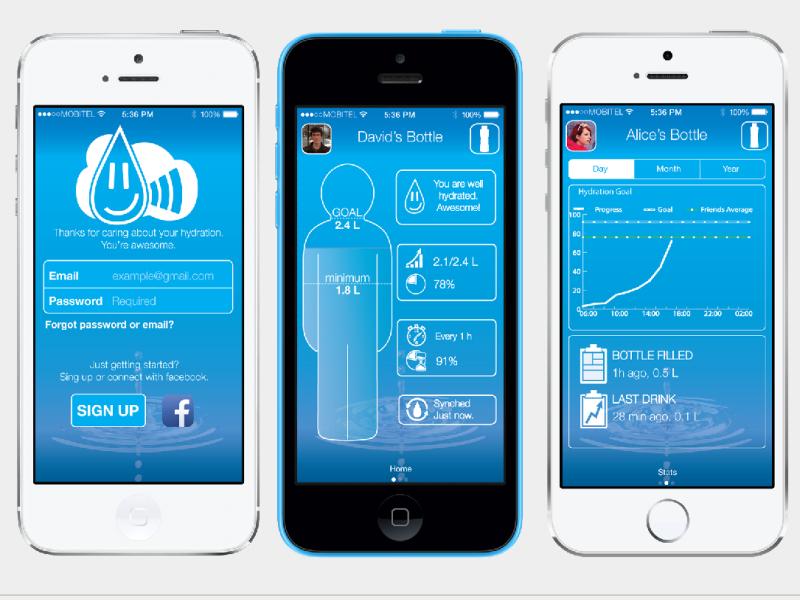

At the PODIM conference held recently in Maribor the Startup competition award for 2014 was given to H20 Pal innovation; the winner was chosen from five finalist. The team of the OOG company is developing a H2O-Pal hydration tracker for water in glass or plastic bottles, which via Bluetooth connection informs the application on the smartphone about the quantity of water drank by the user, and warn of danger of dehydration. We had a chat with Igor Marjanovič, the manager of the company.
___________________________
Where did you get the idea to offer to the market a hydration tracker H2O-Pal?
H2O-Pal is a product I wanted to buy in order to solve the problems of dehydration in my family. I simply couldn't find a suitable device on the market, therefore my brother and I decided to develop H2O-Pal by ourselves.
How does your smart hydration tracker in a bottle work?
You simply put the device at the bottom of the bottle. One of the biggest advantages of H2O-Pal is the fact that the device never comes into direct contact with the water you drink. We use custom-made measuring cells which work in combination with our smart algorithms for mass monitoring. We use also additional sensors (e.g. for acceleration measurement) to guarantee correct operation of algorithms and cell. Each time you place a bottle with H2O-Pal let's say on the table, the device performs a measurement, and thus data on the quantity of water you have drank is obtained.
We consume liquids in other ways as well, e.g. with soup, coffee… H2O-pal simply can't know that. What is your comment?
Yes. H2O-Pal can't automatically measure your complete intake of water – there is also a certain percentage of water in food you eat. The primary task of H2O-Pal is to help people develop a healthy habit of drinking water. H2O-Pal collects data and if necessary alerts you to help you reach your daily target. Drinking water is a great help at reducing the intake of carbonated drinks. It also helps reduce the intake of calories (consequently loss of weight), and it reduces the risk for diabetes.
Do you think an ordinary consumer needs it? Are we really so preoccupied with other things that we forget to drink, and are consequently too often dehydrated?
This purpose of this product is not explicitly to prevent dehydration, although it can be of great help. It is well known that drinking water is very good for your health, and until now it was not possible to monitor automatically the quantity of water a person drank. The researches and results based on similar products which are already available at the market show that the availability of data on a certain habit, e.g. regarding drinking of water, helps people towards healthier behaviour. In absence of such data it is much more difficult to embrace the healthier lifestyle.
Which is your target group? Have you made any researches abroad?
The best response to H2O-Pal was given by people interested in sport, healthy diet, fitness, and technological novelties. "Quantified Self" communities which are gaining popularity in the USA are especially enthusiastic about H2O-Pal. There are several interesting niches, but our target group mainly consists of young people with higher education and better-of than average individuals. We made a research in the USA, in California, there are also researches and predictions by large survey institutes researching our wider market. All the researches support our data.
At first your company tried to find fresh capital in the USA, at Kickstarter. What was the reason you were not successful, and how do you intend to finance production launch, for which you estimate approximately three million euros would be required?
Kickstarter didn't look promising, therefore we aborted it. It was the first project we tested at Kickstarter, and a number of crucial mistakes were made – mostly in planning the campaign, marketing, and promotion. I am extremely grateful for the experience with Kickstarter, as I think we learned a lot with minimal expenses. At the moment the investors have not been chosen yet, but in order to launch the production we need much less than three million euros. We are looking for an investment which would also bring certain knowledge, and not only money. I am confident we will be successful, and soon.
Will you be able to compete with the competitors who have much more money at their disposal?
We are creating a new category of products. As the market is small at the moment, I doubt it is attracting dangerous competitors. That will most certainly change in future, but I believe that by that time we will have taken the leading position in our field. We will keep it, however, only by remaining both innovative and competitive.


































































